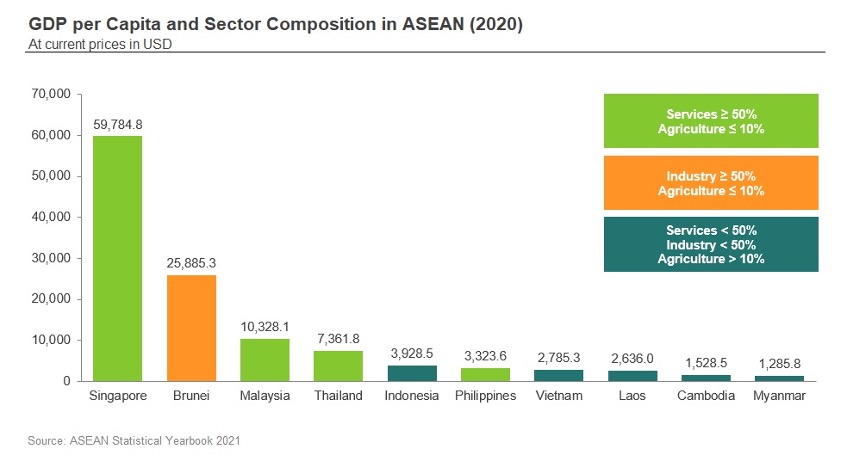Sustainable development is a strategic priority for ASEAN, with Southeast Asia being one of the regions most vulnerable to the impact of climate change. The ASEAN Economic Community Blueprint 2025 highlights the importance of sustainable economic development as an integral part of the region’s growth strategy. ASEAN is committed to contributing to the global and regional climate goal of achieving carbon neutrality by 2050. Financing is the key to supporting and advancing the transition to net zero. In November 2021, the ASEAN Taxonomy Board released the first version of the ASEAN Taxonomy for Sustainable Finance (ASEAN Taxonomy), which introduces a common language across the region for the financing of sustainable activities and provides a framework for discussions among ASEAN countries. It helps financiers and investors understand the sustainability impact of a project or economic activity.
The ASEAN Taxonomy
Each of the ten ASEAN countries has its own economic characteristics, and therefore has a different transition path. For example, Singapore, Malaysia, Thailand and the Philippines are service‑based economies, while Brunei’s economy is dominated by the oil and gas industry. Meanwhile, agriculture remains an important sector for Indonesia, Vietnam, Laos, Cambodia and Myanmar.
The ASEAN Taxonomy has five key principles:
1. It aims to be an overarching guide for all ASEAN Member States, providing a common language and complementing their respective national sustainability initiatives.
2. It will take into consideration widely used taxonomies and other relevant taxonomies, as appropriate, and will be contextualised to facilitate an orderly transition towards a sustainable ASEAN.
3. It will be inclusive and beneficial for all ASEAN Member States.
4. It will provide a credible framework, including definitions, and, where appropriate, be science-based.
5. It will align with, or at the least not be in conflict with, the sustainability initiatives taken by the capital market, banking and insurance sectors.
The ASEAN Taxonomy introduces a multi‑tiered framework, comprising a “Foundation Framework” (which allows a qualitative assessment of activities on their contributions to transition) and a “Plus Standard Framework” with metrics and thresholds (which allows users to further qualify and benchmark eligible green activities and investments).
The Foundation Framework adopts a principles‑based approach, applicable to all economic activities. Under the Foundation Framework, an economic activity must fulfil at least one of the four environmental objectives – climate change mitigation and adaptation, protection of healthy ecosystem and biodiversity, promotion of resource resilience, and transition to a circular economy. Most importantly, the economic activity must do no significant harm to the broader environment and conduct remedial measures to transition. The Foundation Framework uses a single sector agnostic decision tree to assess and classify activities into different categories.



